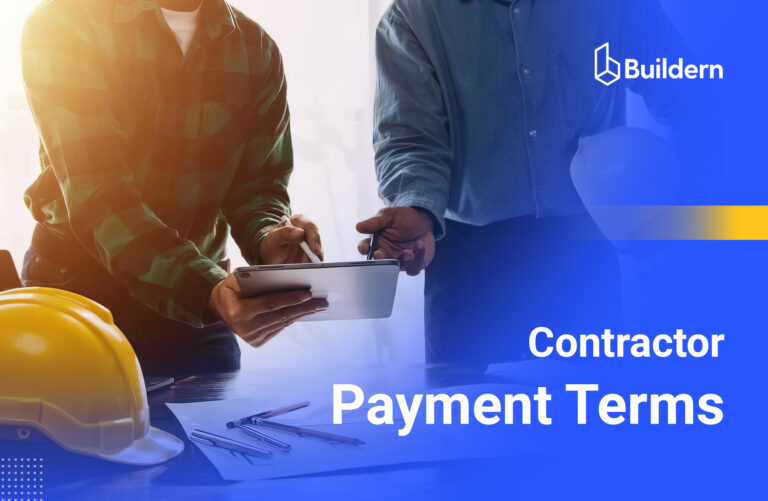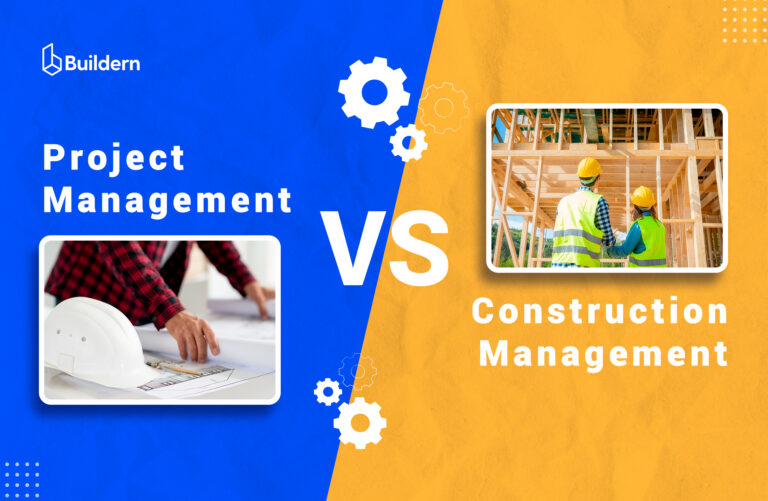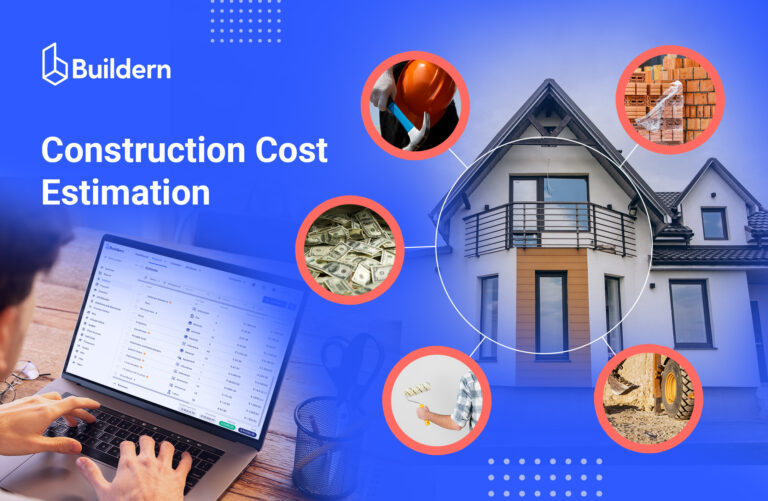Contractor Payment Terms | Everything You Need to Know

Are you curious about handling contractor invoices without any hassles or issues?
In the construction industry, contractor payment terms are as important as hiring professional contractors. A lack of a payment agreement or a poorly designed one can lead to project delays and, in some cases, project termination.
In this article, we will explore what contract payment terms are, what are the key points to consider, and how to streamline payments with enhanced flexibility.
Table of Contents
- What are Contractor Payment Terms?
- Why Include Payment Terms in Construction?
- Who Sets Contractor Payment Terms
- Key Points to Consider for Contractor Payment Terms
- Methods for Keeping Clients Within Payment Schedules
- Sample Payment Schedules in Construction
- Typical Payment Terms for Contractors
- Streamline Payments with Enhanced Flexibility
- Wrapping It Up

What are Contractor Payment Terms?
Let’s take a closer look at what contractor payments are and how they can help you grow your contracting business.
Payment terms outline how, when, and by what method your clients should pay for your services. Having clearly defined payment terms in your contract is essential and will help to avoid misunderstandings between both parties.
Typical contractor payment terms should include the following:
- The currency of payment
- How and when the payments will be made
- Charges and interest
- Any special terms discussed with the client regarding the payment schedule
As strange as it may sound, some construction contracts do not mention payment terms, which causes many issues afterward. This, unfortunately, may result in disputes between the parties, creating unnecessary tension and leading to project delays.
Why Include Payment Terms in Construction Contracts?
Including payment terms in construction contracts is essential, ensuring clarity between both parties involved. Below, we will explore the key reasons for including payment terms in the contracts.
- Timely payments: The key reason for defining payment terms is to ensure you receive scheduled payments on time from the client. Negotiating the payment with the client beforehand is essential. This will ensure that both sides can plan their budgets and activities accordingly.
- Legal protection: You get peace of mind knowing you have legal protection in case your client fails to pay you on time. Once you agree upon payment conditions, include them in your client contract in every detail.
- Budget planning: Defining these terms and conditions can also help you estimate your cash flow. Knowing when and how much money you will have on hand allows you to make important financial decisions beforehand.
- No communication gaps: Having clear contractor payment terms minimizes confusion and sets the bar for future expectations. When both parties know what to expect and when to expect it, there is no room for misunderstandings.
Who Sets Contractor Payment Terms
Much like the construction project itself, the terms of payment are the result of collaboration between two parties. Though contractors might have their preferred payment terms, they should also consider the client’s convenience, the scope of the project, and many other factors to set terms that are convenient for all stakeholders.
While in most cases, it is a negotiated agreement between contractors and clients, in some cases the requirements of contractor payment terms may be influenced by the local regulations.
Key Points to Consider for Contractor Payment Terms
Now, let’s look at how to set contractor payment terms that will protect you in all situations!
Agree beforehand
Hardly anyone likes to read every detail of long and wordy contracts. But it’s only when we run into too much back-and-forth and disagreements during a project that we acknowledge the importance of the terms and conditions.
Particularly in such a complex field as construction, with projects that cost hundreds of thousands and often millions of dollars, defining payment terms upfront is an absolute must.
Before you sign a contract, make sure to go through the agreement in detail to ensure everything is clear, and the contract protects you in every possible scenario when your payment is at risk. Also, be certain to include clauses in the contract that cover dispute resolutions and a provision for additional work and variations, should they occur. When it comes to defining the payment terms beforehand, it’s also of utmost importance to review them promptly and, if needed make the necessary adjustments and always keep them up to date.

Control Payment Schedule
The payment schedule should include all of the information you need to plan out anticipated payments. Typical payment terms should include the following:
• The contract start date
• Initial payment amount (downpayment)
• Scheduled intervals for subsequent payments
• Project completion timeframe
• The estimated total amount for construction
A simple time-based schedule for a home remodel at $160,000 may look like this:
Down Payment: $5,000
Week 2 Progress Payment: $36,800
Week 4 Progress Payment: $36,800
Week 6 Progress Payment: $36,800
Week 8 Progress Payment: $36,800
Final Payment for Job Completion: $7,800
These details can serve as a general guide for budgeting and resource allocation during the project and are important for delivering a project without cash flow issues. This approach will help in delivering the project on time and within the financial expectations of the parties.
Methods for Keeping Clients Within Payment Schedules
Have Late Payment Penalties
To be prepared for such cases, you can add a late penalty clause in the contract. It’s mostly acceptable to charge a penalty fee of 1-3% every week if a payment is late.
You may also opt for a mechanics lien which is a construction company’s most powerful tool to ensure they get paid on time. It gives contractors the legal right to place a lien on the property if they aren’t paid. It is also a great idea to have a consistent invoice reminder procedure since it will ensure a steady cash flow.
Early Payment Incentives
On the other hand, you can offer your clients an early payment discount to motivate them to pay on time. For example, you could offer a 10% discount if the client pays within 20 days instead of 30. An effective and easy strategy for payment collection is to set up friendly reminders for due payments.
Another key point to consider is negotiating shorter payment periods. The duration of the invoice payments may vary according to your business structure, from 10-15 days to 90 days.
Clearly Define Payment Methods
Including multiple payment methods in a contract and allowing clients to choose the one that’s most convenient for them increases the likelihood of receiving money on time.
Go beyond the usual cash payments
Among the most efficient and fastest forms of payment nowadays are mobile and online payments (like PayPal). Allowing clients to pay with credit cards (Visa, Mastercard, American Express) and debit cards or bank transfers directly on invoices are progressive payment techniques to consider.
They are easy to use for both parties in a contract, give extra financial flexibility, and keep a record of all the transactions between you and your client. You can accept online payments through a merchant service provider and choose a merchant service that can integrate with your invoicing software.
Invoice on Time
Above all, never put off invoicing. Delays in invoicing can result in late payments or cash flow interruptions; both are things you should try to avoid. Many clients have fixed dates for paying invoices. Scheduling a due date nearer to such dates can ensure prompt payments.
Sample Payment Schedules in Construction
Set a construction payment schedule that documents a timeline throughout the whole project and identifies when your clients will need to make money transfers to you. If you haven’t had such an experience before, here are some payment schedules that work the best in the construction industry.
Prepayment
A prepayment is when the client pays you some amount of money in advance before you deliver the service. Some companies ask for an upfront payment as a small percentage of the overall payment. Sometimes upfront payment becomes crucial for construction company owners, to have some money in advance for their service to pay for the initial project costs.
However, as with any financial transaction made in expectation of work being carried out, there is a risk. The main problem is the possibility that the work will not be completed, either because the contractor is unable to do it satisfactorily, or in the worst-case scenario, ceases to trade.
Net 10, 30, and 60
Net payment is the most common payment schedule for medium-sized construction companies. This payment term refers to the number of days: 10, 30, or 60 days. This is the number of days within which an owner should pay an invoice after it has been received.
10, 30, and 60 are the most accepted net payment terms in the market, but that doesn’t mean you can’t set your net days.
Just make sure your set schedule is acceptable and approved by your client beforehand.
The 2/10 Net 30 Principle
The 2/10 net 30 principle represents an agreement that the client will receive a 2% discount on the net invoice if they pay within 10 days. Otherwise, the full invoice amount is due within 30 days. This may serve as a motivation for clients to send the invoices promptly.
With this schedule, contractors get a quicker-than-usual injection of working capital they can put to good use immediately, while clients can capture a risk-free return on investment through the discounted invoice.
Cash on Delivery
Cash on delivery (COD) represents any payment from the owner once they receive a certain milestone from the pre-agreed construction project. Receiving payment immediately after reaching a specific project milestone is a great practice since contractors can reinvest this money in resources and materials . With this schedule, you can greatly shorten the days receivable for a business. If you want to use this term often, it is helpful to have many avenues for payment such as credit card and EFTPOS facilities.
End of Month
A client’s responsibility to pay an invoice by the month’s end is referred to as the end of the month (EOM) payment. So if you receive an invoice dated January 21, your payment is due by January 31. This has the advantage of ensuring a relatively predictable receipt of funds at the end of each month.
You might also employ a net 5 EOM, which requires the client to pay within five days following the EOM.
Typical Payment Terms for Contractors
A well-defined set of payment terms should include enough detail to ensure all project stakeholders are informed and aware of the pre-defined payment schedule.
Legal Contact Details of Both Parties: It’s an easy oversight to make, but without the proper information-legal names, addresses, and appropriate signatures on all required documents, a contract is not legally binding even if it’s signed. In some cases, it’s also essential for builders to include their license number in the contract.
Scope of Work: The scope of work might be the most important part of the construction contract, as it defines all the objectives and requirements of the project. This area of the contract should, in great detail, explain the services to be provided, including a description of materials, quality, schedule of work, and other specifications pertinent to the construction.
A Schedule of Work: Establishing a payment schedule and a timeline of the payments throughout the lifetime of the project is essential in any construction contract. These schedules help clients know when and how much they need to pay the contractor. Having a clearly defined project schedule promotes transparency and ensures timely compensation for the project.
Project Costs and Payment Methods: Clearly stating the total cost of services listed in the contract and anything beyond its scope is of utmost importance. This will ensure that both parties know about every single detailed and that they are on the same page. The contract should also define which payment methods are acceptable for you.
Authority: Finally, outlining who from the parties in the contract has the authority to make and finalize decisions during the construction project will help to avoid disputes. With so many moving parts, this simple element in the contract can save a lot of headaches and confusion.
Streamline Payments With Enhanced Flexibility
Even after setting up payment terms and schedules, keeping up with deadlines will not be easy when you work on multiple projects. While it may seem challenging to stay on top of different deadlines, doing it is essential to ensure you get paid promptly.
As a contractor, you can effectively manage payment processes by using a single software.
Generate Invoices Easily!
Invoices provide flexible solutions to help you maintain cash flow throughout the different phases of each build. With Buildern you can set up progress billing for regularly scheduled payments tied to project milestones.
Once you have created your invoice and checked every detail, send it to your client from Buildern’s dashboard.
- The client will instantly receive an email with the link to the invoice.
- The letter will contain detailed notes on the invoice amount, due date, and other information about the job.
- Once the client sees the invoice, Buildern will automatically change the invoice status to “viewed”.
Wrapping It Up
The contractor payment terms spell out how and when your clients make payments to your company. It is essential to utilize various methods to keep your clients within schedule. Moreover, communicating all payment details to your clients beforehand will ensure everyone is on the same page. This in its turn helps them build better professional relationships and get the money on time.



